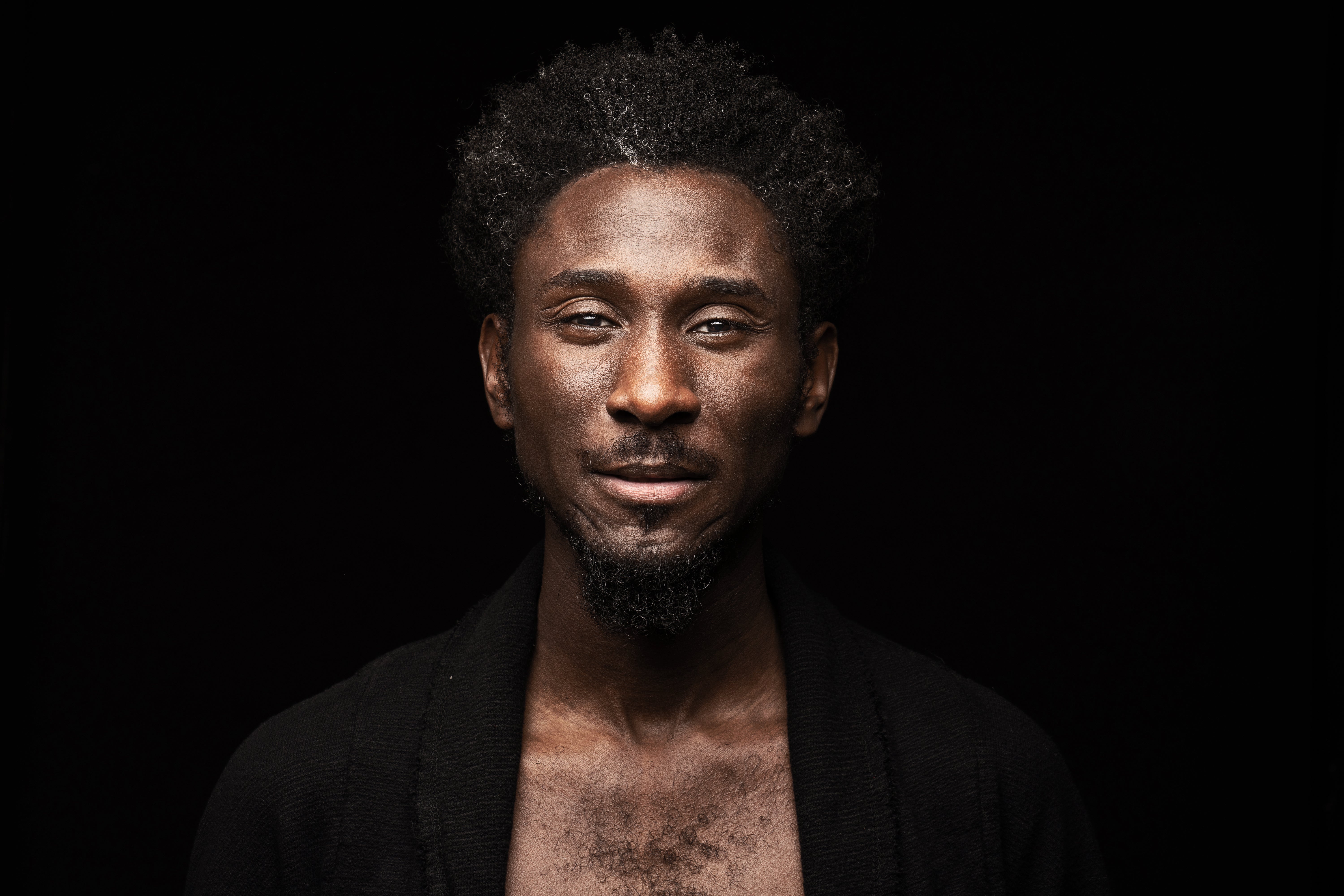‘Without people there is no purpose’: Photographer Cephas Williams on 56 Black Men
The photographer, architect and founder of 56 Black Men and the Black British Network tells Andy Martin about his life and work


It’s not often one of these conversations begins with the interviewee telling me: “I was depressed and suicidal at the time.” He was 17 then. Now Cephas Williams is 29, a photographer, an architect, and the founder and director of 56 Black Men and the Black British Network. And he’s a father too, with a life-affirming message for his son.
Growing up in south London, he experienced a fair amount of “trauma”. But not so much on his own account. “I’m empathetic,” says Williams, “and I carry the burden of others. I was seriously upset.” He had a workable solution for fixing his “inward-facing rage”, though. And I think this might help anyone else who is feeling down. He tried to imagine what the world would be like without anyone in it.
“First I took out everyone in New Cross. Then I took out everyone in London. Then the UK, then the whole world. I was seeing the whole world with only me in it. And I came to the realisation that without people there is no purpose.” So he added everyone back in again, one by one. “If there was no one in the world, there would be no reason for my existence.”
Williams says that going into architecture was a logical decision. “You’re here for everybody else, not for yourself.” And that was the keystone of his approach: “People are primary, buildings are secondary – they are simply places where we gather. It’s where you have your first kiss. It’s the difference between being warm and being cold.”
But he didn’t finish his architecture degree at Kingston University. He doesn’t want to say he “dropped out”, rather he “walked away”. It was hard for him because he loved architecture. But there was a reason for it. In a word, it was gentrification. He didn’t want to be any part of it. “There was a disconnect between what I was studying and the reality of what was happening in New Cross. It was being gentrified right in front of my eyes.”
The problem with gentrification is that it tends to sacrifice the people who are already living somewhere on the altar of architecture. Wiliams says: “When I see a window, I see a family. I don’t see a facade, I see people.” He didn’t want to end up “drawing lines” as he puts it, he wanted to get out there and do something about it.
What he did next was set up Drummer Boy Studios in a derelict shop on Peckham High Street, which he describes as the “WeWork of the creative industry”, providing a haven for artists and filmmakers and musicians. The idea was to connect creatives to a network and widen participation. “The main disadvantage of the disadvantaged is not poverty,” he says, “it’s access, the lack of access.”
Williams understood that when he walked into a room he was being slotted into a stereotype by virtue of the colour of his skin
Celebrated architects like Richard Rogers and firms like BDP bought into the programme. Meanwhile, Williams was sleeping on an inflatable bed in the studio in order to stop an unscrupulous landlord changing the locks on the building to get them out. So he went to Southwark Council to try to resolve the issue.
“Drummer Boy was all about social mobility, it wasn’t black-based. But the white guy at the council didn’t see it that way.” The housing manager held up a hand (in the manner of a traffic cop stopping traffic) and said: “When it comes to black issues, you don’t talk to me.” Williams was sent away, dismissed. He calls the attitude “unhelpful”, but you could call it apartheid: black issues had to be dealt with by a council designated civilian who was black. At the same time, the rogue landlord was calling out the police to try to get them evicted with the message: “Two black boys have broken into a block of flats.”
It was around this time that Williams had what he refers to as the “second realisation”: when a black person realises for the second time that they’re black – but now in the context of racial bias. “I could have left that day in handcuffs,” says Williams, but he was able to keep his cool and document his legal right to be in the building and the police politely withdrew.
56 Black Men was born out of that confrontation. Williams understood that when he walked into a room he was being slotted into a stereotype by virtue of the colour of his skin. He was the object of a widespread narrative about black men. “A black person is not valued on an intellectual level – unless you entertain us first. If you’re not a victim of knife crime or a footballer, then you must be an entertainer.”
Williams looked up the statistics: in 2018, 56 black people were murdered. It wasn’t that these deaths were ignored, but he felt that it was increasingly difficult to see black men as anything other than perpetrators or victims. In other words, the portrayal of black men in the mainstream media was contributing to their fate. He felt as if he was being educated to see other black men as potential enemies. “But no black boy was born with a knife in his hand. We are being shoe-horned into these roles.”
Fast asleep on his blow-up bed, he had a dream in which he saw a multitude of black men all garbed in black hoodies. “It’s not the image of a businessman, is it? But I’m a black man and I look like this sometimes.” He wanted to show how absurd and misleading the stereotype was. So he took 56 black men, from a variety of professions, an MP (David Lammy), entrepreneurs, doctors, writers, actors, a plumber, a choreographer and a magistrate, and photographed them all wearing black hoodies. The collage of those portraits became the symbol of a campaign to overthrow a pervasive delusion. Giant posters that went up around London just before Christmas two years ago were accompanied by the slogan: “I AM NOT MY STEREOTYPE.” That image flew around the world.
The killing of George Floyd in May 2020 took place just as Williams was expecting the birth of his son, Zion. One black man was taken out of the world at the same time as a black child entered into it. Out of that conjunction came both the “Let’s Not Forget” campaign and the Black British Network. His movement attracted backing from the actor and screenwriter Simon Pegg, as well as Paul Polman, former Unilever CEO, and Jude Kelly CBE, theatre director and founder of the WOW Foundation. “I see myself as a conduit between worlds,” says Williams.
After the birth of his son, Cephas Williams wrote his “Letter to Zion” to give him ample warning of the very real problems he is likely to run into but also to express his hope that the world can be rectified through collective action and building alliances. “By the time you are 20,” he writes, “I want to see a world where black people are treated fairly and afforded the same opportunities as their white counterparts.”
Join our commenting forum
Join thought-provoking conversations, follow other Independent readers and see their replies
Comments



Bookmark popover
Removed from bookmarks